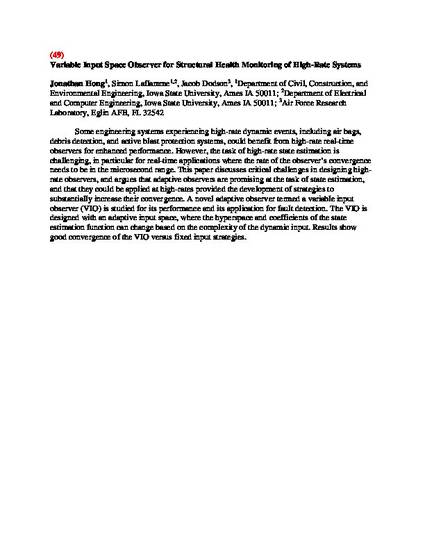
Some engineering systems experiencing high-rate dynamic events, including air bags, debris detection, and active blast protection systems, could benefit from high-rate real-time observers for enhanced performance. However, the task of high-rate state estimation is challenging, in particular for real-time applications where the rate of the observer’s convergence needs to be in the microsecond range. This paper discusses critical challenges in designing highrate observers, and argues that adaptive observers are promising at the task of state estimation, and that they could be applied at high-rates provided the development of strategies to substantially increase their convergence. A novel adaptive observer termed a variable input observer (VIO) is studied for its performance and its application for fault detection. The VIO is designed with an adaptive input space, where the hyperspace and coefficients of the state estimation function can change based on the complexity of the dynamic input. Results show good convergence of the VIO versus fixed input strategies.
Available at: http://works.bepress.com/simon_laflamme/35/
